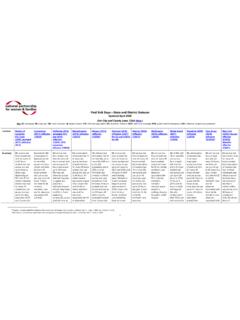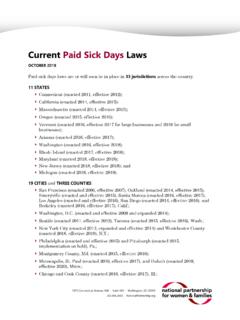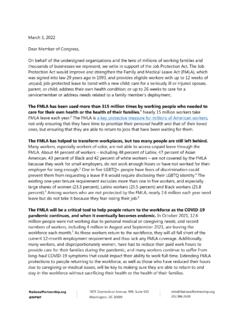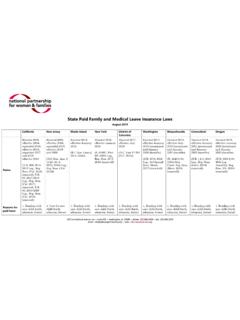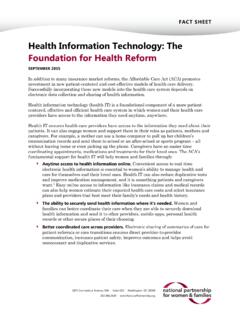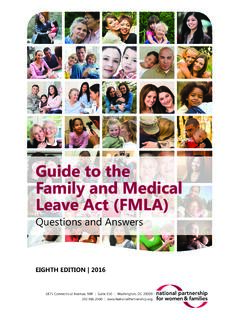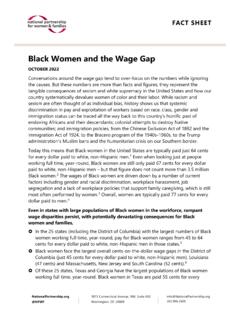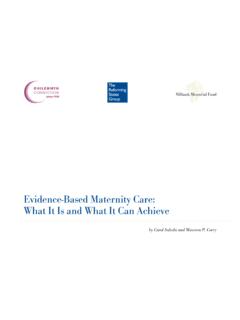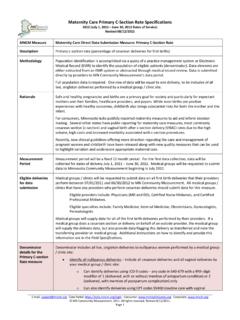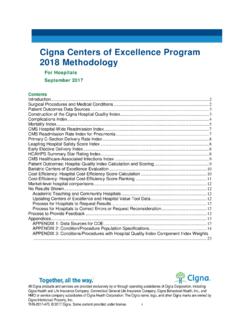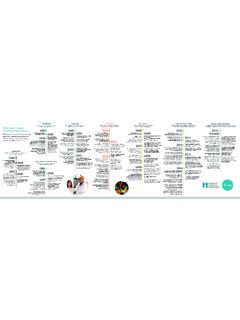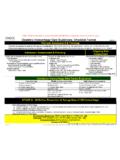Transcription of Evidence-Based Maternity Care: What it is and …
1 Evidence-Based Maternity care : what It Is and what It Can Achieve by Carol Sakala and Maureen P. Corry Evidence-Based Maternity care : what It Is and what It Can Achieve by Carol Sakala and Maureen P. Corry Childbirth Connection Reforming States Group Milbank Memorial Fund Milbank Memorial Fund 645 Madison Avenue New York, NY 10022. The Milbank Memorial Fund is an endowed operating foundation that engages in nonpartisan analysis, study, research, and communication on significant issues in health policy. In the Fund's own publications, in reports, films, or books it publishes with other organizations, and in articles it commissions for publication by other organizations, the Fund endeavors to maintain the highest standards for accuracy and fairness. Statements by individual authors, however, do not necessarily reflect opinions or factual determinations of the Fund. 2008 Milbank Memorial Fund. All rights reserved.
2 This publication may be redistributed electronically, digitally, or in print for noncommercial purposes only as long as it remains wholly intact, including this copyright notice and disclaimer. Printed in the United States of America. ISBN 978-1-887748-70-4. This report is printed on paper containing recycled fiber that is certified by the Forest Stewardship Council, which promotes environmentally responsible, socially beneficial, and economically viable management of the world's forests. Cert no. SGS-COC-003288. TABLE O F CONTENT S. List of Tables, Figures, and Sidebars .. iv Foreword .. v Acknowledgments .. vii Executive Summary .. 1. Introduction .. 7. Maternity care in the Health care System: Prominent Position, Large Expenditures, Troubling Performance .. 10. Evidence-Based Maternity care : Effective care with Least Harm .. 21. The Physiologic Foundation of Evidence-Based Maternity care .
3 25. Overused Interventions: Examples of Practices to Use Judiciously and with Careful Attention to Informed Consent .. 35. Underused Interventions: Examples of Practices to Use Whenever Possible and Appropriate .. 51. Challenges to Closing evidence -Practice Gaps in Maternity care in the United States .. 59. Policy Recommendations Developed in Collaboration with Members of the Reforming States Group .. 68. Appendix: Leading Resources and Tools for Evidence-Based Maternity care .. 71. References .. 73. The Authors .. 110. Selected Publications of the Milbank Memorial Fund .. 112. Selected Publications of Childbirth Connection .. 114. L i s t o f Ta b l e s , F i g u r e s , a n d S i d e b a r s Tables 1 Leading Procedures Billed to Medicaid and Private Insurance Payers, United States, 2005 .. 13. 2 Performance on Selected Indicators of Maternal and Newborn Health, United States, Each State, and District of Columbia.
4 18. 3 Childbirth in Hospitals, 2005: Listening to Mothers II Survey .. 27. 4 Intervention Rates for Low-Risk Women in the United States and among Births Attended by Certified Professional Midwives, 2000 .. 29. Figures 1 Leading Major Diagnostic Categories by Number of Hospital Discharges, United States, 2005 .. 10. 2 Percentage of Pregnancy, Childbirth, and Puerperium and All-Condition Hospital Discharges by Payer, United States, 2005 .. 11. 3 Total Hospital Charges by Payer, United States, 2005 .. 12. 4 Average Facility Labor and Birth Charge by Site and Mode of Birth, United States, 2003 2005 .. 15. 5 Preterm Birth Rate and Low Birthweight Rate, United States, 1981 2006 .. 16. 6 Total Cesarean, Primary Cesarean, and Vaginal Birth after Cesarean (VBAC) Rates, United States, 1989 2006 .. 42. Sidebars what Is the Gold Standard for Knowledge about Effects of Maternity care ? .. 22. National Midwifery Credentials: Certified Nurse-Midwife, Certified Midwife, and Certified Professional Midwife.
5 30. Diethylstilbestrol (DES) Clari es Importance of Caution with Perinatal Exposures .. 33. Is the Most Resource-Intensive care the Best care ? .. 45. The evidence about Vaginal Birth after Cesarean (VBAC) .. 57. CC, RSG, MMF iv Foreword Evidence-Based Maternity care uses the best available research on the safety and effectiveness of specific practices to help guide Maternity care decisions and to facilitate optimal outcomes in mothers and newborns. Although the field of pregnancy and childbirth pioneered Evidence-Based practice, resulting in a wealth of clear guidance for Evidence-Based Maternity care , there remains a widespread and continuing underuse of beneficial practices, overuse of harmful or ineffective practices, and uncertainty about effects of inadequately assessed practices. In order to inform coverage and clinical policy decision making for Maternity care , Childbirth Connection (CC), the Reforming States Group (RSG), and the Milbank Memorial Fund (MMF).
6 Collaborated to write, review, and publish this report. The report presents a discussion of current Maternity care in the health care system and identifies key indicators that show the need for improvement. The report further summarizes results of the many systematic reviews that could be used to improve Maternity care quality, identifies barriers to the use of Evidence-Based Maternity care , and offers policy recommendations and other strategies that could lead to wider implementation of evidenced- based Maternity care in the United States. These Maternity care quality concerns and opportunities for improvement are not widely recognized at this time. Organized in 1992, the RSG is a voluntary association of leaders in health policy in the legislative and executive branches of government, from all fifty states, Canada, England, Scotland, and Australia. The Milbank Memorial Fund is an endowed national foundation, established in 1905, that works with decision makers in the public and private sectors to carry out nonpartisan analysis, study, and research on significant issues in health policy.
7 Established in 1918, Childbirth Connection (formerly Maternity Center Association) is a national not-for-profit voice for the needs and interests of childbearing families. Its mission is to improve the quality of Maternity care through research, education, advocacy, and policy. Many members of the RSG, as well as others knowledgeable in the field, reviewed successive drafts of this report. As a result of these reviews and the authors' subsequent revisions, we believe that the information in this report is timely and accurate. The matters that have been highlighted by the authors do not necessarily represent the policy preferences of all the members of the RSG or of the other individuals who reviewed drafts of this report. We thank all who participated in this project. Eileen Cody Chair, Health care and Wellness Committee Washington House of Representatives Co-Chair, Reforming States Group v CC, RSG, MMF.
8 Kevin Concannon Former Director Iowa Department of Human Services Past Co-Chair, Reforming States Group John Nilson Member of the Legislative Assembly Province of Saskatchewan Co-Chair, Reforming States Group Maureen P. Corry Executive Director Childbirth Connection Carmen Hooker Odom President Milbank Memorial Fund CC, RSG, MMF vi Acknowledgments Our sincere thanks to those who generously contributed to this report. They are listed in the positions they held at the time of their participation. The following members of the Reforming States Group demonstrated initial and continuing enthusiasm, helped us set a direction, and worked with us to increase the utility of the report for policymakers: Laurie Monnes Anderson, Chair, Health Policy and Public Affairs Committee, Oregon Senate; Lee Greenfield, Senior Policy Advisor, Hennepin County Department of Human Services and Public Health; Toni Nathaniel Harp, Chair, Committee on Appropriations, Connecticut Senate; Pamela S.
9 Maier, Chair, Health and Human Development Committee, Delaware House of Representatives; John M. O'Bannon, Member, Health, Welfare and Institutions Committee, Virginia General Assembly; Amy R. Paulin, Chair, Committee on Libraries and Education Technology, New York State Assembly; Charles K. Scott, Chair, Labor, Health and Social Services Committee, Wyoming Senate. The following referees honored us with a careful reading and thoughtful feedback on ways to improve the report: Leah Albers, Professor, University of New Mexico; Jos M. Beliz n, Adjunct Professor, Institute for Clinical Effectiveness and Health Policy, Buenos Aires; Ned Calonge, Chief Medical Officer, Colorado Department of Public Health and Environment; Rosemary Chalk, Director, Board on Children, Youth, and Families, Institute of Medicine; Frank Chervenak, Professor, Chair, and Director, Maternal Fetal Medicine, Department of Obstetrics and Gynecology, Weill Medical College of Cornell University; Helen Darling, President, National Business Group on Health; Suzanne Delbanco, Chief Executive Officer, The Leapfrog Group; Marilyn DeLuca, Executive Director, Jonas Center for Nursing Excellence; Murray Enkin, Professor Emeritus, Department of Obstetrics and Gynecology, McMaster University; Eunice Ernst, Director, American Association of Birthing Centers Consulting Group.
10 Tina Clark-Samazan Foster, Assistant Professor, Department of Obstetrics and Gynecology, Dartmouth Hitchcock Medical Center; Ellen Hodnett, Professor, Faculty of Nursing, University of Toronto; Debbie Jessup, Legislative Assistant, Office of Representative Lucille Roybal-Allard of California; Holly Kennedy, Associate Professor, University of California at San Francisco; Valerie King, Associate Director, John M. Eisenberg Clinical Decisions and Communications Science Center, Oregon Health and Science University; Andrew Kotaska, Clinical Director, Department of Obstetrics and Gynecology, Stanton Territorial Hospital; Douglas Laube, Chair and Professor, Department of Obstetrics and Gynecology, University of Wisconsin School of Medicine and Public Health; Amy Levi, Interim Program Director, Midwifery, University of California at San Francisco; Mona Lydon-Rochelle, Associate Professor, University of Washington.
